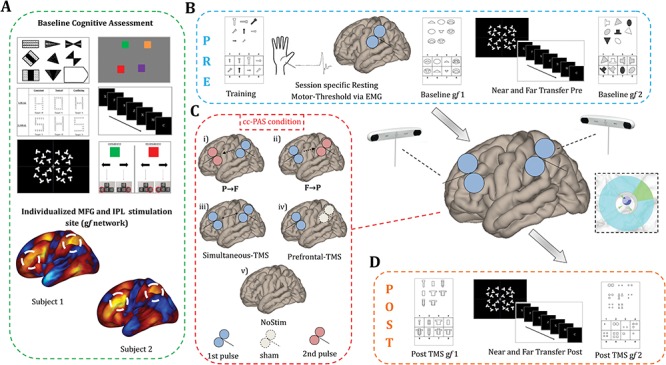Figure 1.

Experimental design. (A) Baseline assessment included a set of neuropsychological tests and resting state fMRI acquisition. A high degree of variability in functional connectivity of prefrontal and parietal TMS targets was present. (B) Pre-cc-PAS evaluation consisted of two gf assessments (Baseline gf 1 and Baseline gf 2) interleaved with a LNG task (near transfer) and VS task (far transfer). TMS parameters were based on individual RMT collected at the beginning of each session. (C) Different TMS conditions were tested on different days: (i) left IPL TMS pulse either preceding (P → F, ISI = +10 ms), (ii) following (F → P, ISI = −10 ms), or (iii) delivered simultaneously (Simultaneous-TMS, ISI = 0 ms) to the TMS pulse over the MFG. Additionally, a (iv) “Prefrontal-TMS” condition was performed by delivering real TMS over MFG and Sham TMS over IPL, while (v) spontaneous learning was tested by longitudinally assessing cognition without stimulation (“NoStim” condition). (D) Post-cc-PAS assessment included two gf evaluations (Post TMS gf 1, Post TMS gf 2), interleaved with an LNG (near transfer) and VS task (far transfer) administrated in reverse order with respect to pre-cc-PAS.
